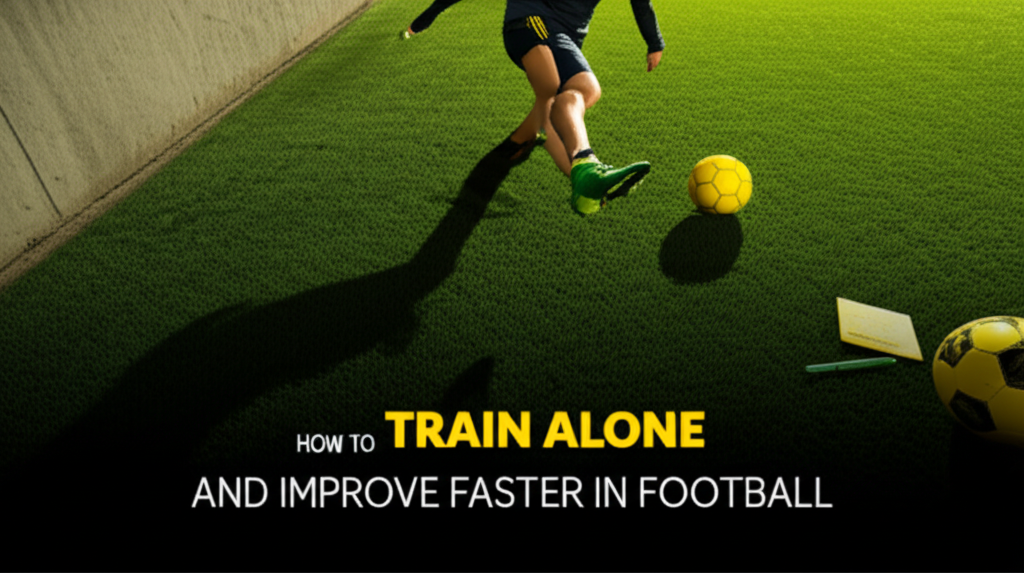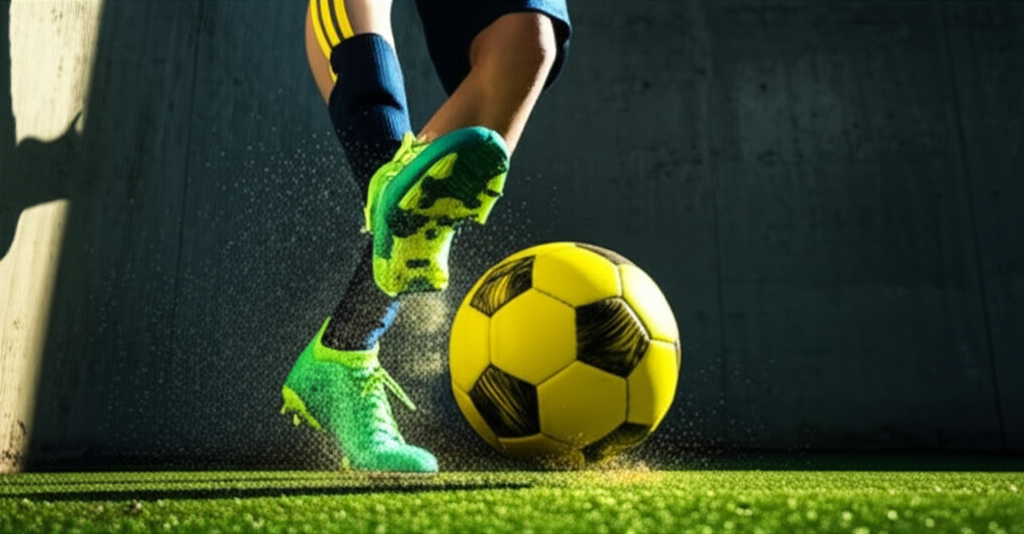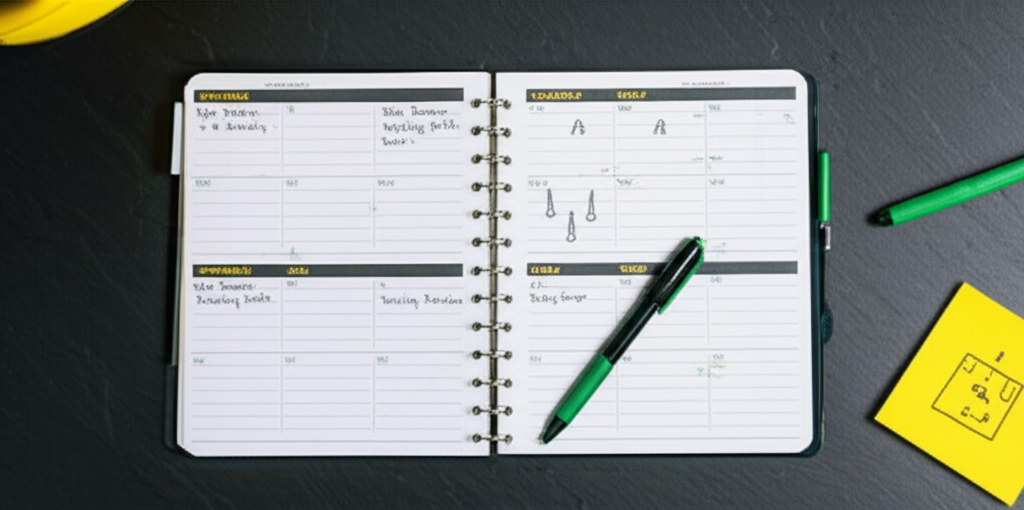You want to improve faster, but you don’t know the best way to do it on your own. While football is a team sport, the players who truly stand out are the ones who master their craft individually. If you learn how to train alone correctly, you will develop skills much faster than your teammates. This guide is your secret weapon to taking control of your development and mastering individual football drills.

Start With a Smart Plan
Before you even touch a ball, you need a plan. The biggest mistake players make is overtraining, which leads to slower performance and injuries. Consequently, you must balance your solo sessions with team training and proper recovery.
Grab a weekly planner and mark your team training days. You can then schedule your individual work on the other days. For example, if you have team practice three times a week, you have three other days for focused solo training.
Most importantly, schedule one full rest day each week. Rest is not laziness; it is a critical part of high performance. This day allows your body and mind to recharge, so you come back stronger.
How to Train Alone: The Core Pillars
Your individual sessions should always focus on the core technical pillars of football. If you consistently work on these areas, your progress will be undeniable. These pillars are:
- Instinct: Reacting without thinking.
- First Touch: Controlling the ball instantly.
- Passing: Delivering accurate and timely balls.
- Finishing: Scoring goals consistently.
Activate Your Football Instinct
Football happens too fast for conscious thought. You don’t have time to think; you must react. This is instinct, and you can train it directly.
First, you need to warm up your body to activate your instinct. Start with 15-20 minutes of slow, intentional ball mastery.
- 5 minutes: Inside touches
- 5 minutes: Outside touches
- 5 minutes: Sole rolls
- 5 minutes: Your choice (e.g., toe taps, weak foot variations)
After your body is warm, move into 20 minutes of “shadow dribbling.” In this exercise, you dribble freely in a space without cones or a set plan. Imagine defenders pressuring you and simply react. Dodge, fake, and explode in different directions. You are letting your subconscious take over and building real-time decision-making skills, crucial for popular solo soccer training questions 2025.
Support our content by checking out our recommended football essentials!
Master Your First Touch
Before you can do anything else, you must be able to control the ball. A poor first touch means you will always be a step behind.
The foundation of a great first touch is juggling. You should juggle every single day for at least 30 minutes. It builds an essential connection with the ball.
For more advanced first-touch work, try these drills:
- Wall Touches: Pass the ball hard against a wall and practice controlling the rebound with one clean touch. This simulates receiving fast passes in a match.
- Wall Juggling: Juggle the ball, then hit it against the wall and control it to continue the rhythm. This forces you to adapt to unpredictable bounces.
- Long Ball Control: Kick the ball high into the air. As it comes down, control it with one calm touch and immediately pass to a target.

Improve Your Passing Without Teammates
You can absolutely develop elite passing skills by yourself. All you need is a ball and a wall. A wall provides instant feedback; a clean pass comes back clean, while a sloppy pass flies off in another direction.
Start with simple one-touch and two-touch passing from 3-5 meters away. Use both feet to build confidence and skill on your weaker side. Then, you can move on to more dynamic drills. Practice passing to the wall and taking a touch to turn, as if you were spinning away from a defender.
Also, try moving sideways along the wall while passing. This drill simulates the rhythm of a match and improves your ability to pass while in motion.
Sharpen Your Finishing Skills
Finishing, like any other skill, improves with repetition. You need to build the mind-foot connection that allows you to strike the ball cleanly without overthinking.
To practice, go to the area of the pitch where you normally play. If you’re a winger, practice from the wing. If you’re a striker, practice with your back to the goal.
Here’s a simple yet powerful drill:
- Juggle the ball a few times to get a feel for it.
- Kick the ball up into the air and let it drop.
- As it comes down, take one perfect touch to turn and then strike it.
Don’t wait to set the ball perfectly. In a match, defenders don’t give you that luxury. Practice hitting the target quickly, even when off-balance. Mix up your shots: use your laces, the inside of your foot, and practice low-driven shots.

Your Weekly Solo Training Plan
Here is a sample plan you can adapt. It assumes you already train with your team three times per week.
- Monday: Team Training
- Tuesday: Solo Session (Instinct & First Touch)
- Wednesday: Team Training
- Thursday: Solo Session (Passing & Finishing)
- Friday: Team Training
- Saturday: Solo Session (Full Technical Workout)
- Sunday: Full Rest Day
Play with Freedom
Remember why you started playing football. This game is meant to be played with joy and creativity, not fear. While structured training is important, don’t forget to just go outside and play.
Fall in love with the process of improving. Touch the ball, play freely, and let your instincts guide you. That is how you will truly grow into the best player you can be.

